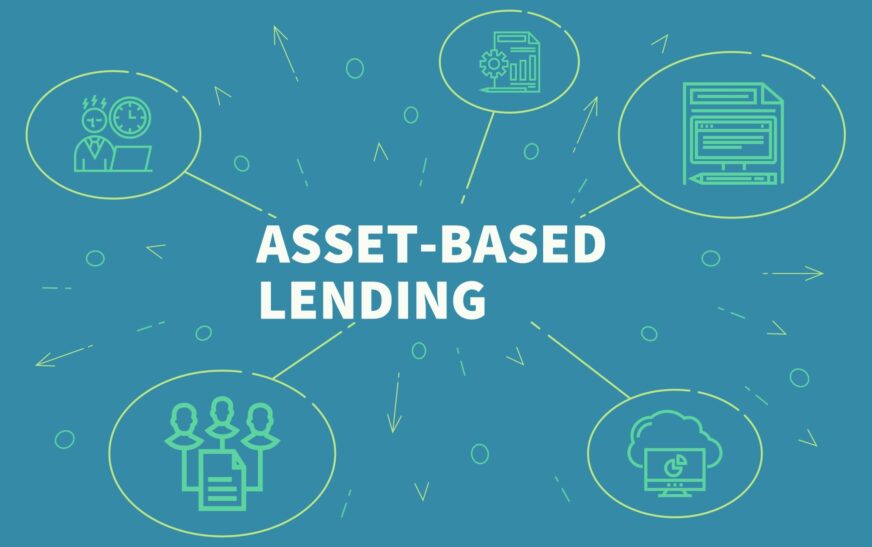Asset-based business loans can provide much-needed capital by leveraging your company’s assets as collateral. If you’re considering applying for such a loan, it’s essential to follow a structured approach to ensure that your application is complete and meets the lender’s requirements. This article outlines the step-by-step process to apply for an Asset Based Business Loan.
Assess Your Business Needs
Before applying for an asset-based loan, evaluate your business’s financial needs and determine how much funding you require. Consider the following factors:
- Purpose of the Loan: Clearly define why you need the loan. Common reasons include funding for expansion, purchasing equipment, or managing cash flow.
- Amount Needed: Calculate the exact amount of funding required. Ensure that your calculations are realistic and based on thorough financial analysis.
Gather Required Documentation
Lenders require various documents to assess your loan application. Prepare the following documents to ensure a smooth application process:
- Financial Statements: Provide recent financial statements, including balance sheets, income statements, and cash flow statements. These documents help lenders evaluate your business’s financial health.
- Tax Returns: Submit your business’s tax returns for the past few years. Tax returns provide additional insights into your company’s financial performance.
- Asset Documentation: Prepare detailed information about the assets you plan to use as collateral. This includes asset valuations, ownership documents, and any existing liens or encumbrances.
- Business Plan: Include a comprehensive business plan that outlines your company’s strategy, market analysis, and financial projections.
- Legal Documents: Provide necessary legal documents such as business licenses, incorporation papers, and any contracts related to the assets being used as collateral.
Evaluate Your Assets
Determine which assets you will use as collateral for the loan. Common assets used include:
- Accounts Receivable: Invoices and outstanding payments from customers can be used as collateral. Ensure that you have a detailed accounts receivable aging report.
- Inventory: Inventory can serve as collateral if it’s easily liquidated. Provide an updated inventory list with valuations.
- Equipment: Equipment such as machinery, vehicles, and computers can be used as collateral. Include detailed descriptions and valuations of the equipment.
- Real Estate: If you own property, it can be used as collateral. Provide property appraisals and ownership documentation.
Research Lenders
Identify potential lenders who offer asset-based business loans. Consider the following when researching lenders:
- Lender Reputation: Research the reputation of lenders by reading reviews and seeking recommendations from other business owners.
- Loan Terms: Compare loan terms, including interest rates, repayment schedules, and fees. Choose a lender that offers favorable terms for your business.
- Experience with Asset-Based Loans: Look for lenders who have experience in providing asset-based loans and understand the specific requirements and risks involved.
Prepare Your Loan Application
Once you have selected a lender, prepare your loan application by completing the following steps:
- Application Form: Fill out the lender’s application form accurately. Provide all required information, including details about your business and the assets being used as collateral.
- Supporting Documents: Attach all required supporting documents, such as financial statements, tax returns, and asset documentation. Ensure that all documents are up-to-date and complete.
- Collateral Information: Provide detailed information about the assets you are using as collateral. Include valuations, ownership details, and any existing liens.
Submit Your Application
Submit your completed loan application along with the supporting documents to the lender. Follow these steps:
- Review Submission Guidelines: Ensure that you adhere to the lender’s submission guidelines, including format and delivery method (online, mail, etc.).
- Track Submission: Confirm receipt of your application with the lender and inquire about the timeline for processing and approval.
Respond to Lender’s Requests
After submitting your application, be prepared to respond to any additional requests from the lender:
- Clarification Requests: The lender may ask for further information or clarification regarding your application. Provide accurate and timely responses to ensure smooth processing.
- Site Visits: Some lenders may conduct site visits to assess your business operations and the condition of the assets used as collateral.
Review Loan Offer
If your application is approved, the lender will present a loan offer. Review the offer carefully:
- Terms and Conditions: Examine the loan terms, including interest rates, repayment schedules, and any fees associated with the loan.
- Collateral Requirements: Ensure that the collateral requirements are clear and align with your initial application.
- Legal Review: Consider having a legal professional review the loan agreement to ensure that all terms are fair and legally binding.
Accept the Loan Offer
If you agree to the loan terms, accept the offer by signing the loan agreement. Follow these steps:
- Sign Agreement: Sign the loan agreement and any other required documents.
- Provide Collateral: If necessary, provide additional documentation or perform any actions required to secure the collateral.
- Disbursement: Once the agreement is signed, the lender will disburse the loan funds according to the agreed-upon terms.
Manage the Loan
After receiving the loan, manage it effectively by:
- Making Payments: Adhere to the repayment schedule and make payments on time to avoid penalties and damage to your credit.
- Monitoring Financials: Continuously monitor your business’s financial health and ensure that you use the loan funds for their intended purpose.
- Communicating with Lender: Maintain open communication with your lender. Inform them of any significant changes in your business that could impact loan repayment.
Conclusion
Applying for an asset-based business loan involves a series of steps, from assessing your business needs to managing the loan after disbursement. By thoroughly preparing your application and understanding the requirements, you can increase your chances of securing the necessary funding to support your business growth.
FAQs
What types of assets can be used as collateral for an asset-based loan?
Common assets include accounts receivable, inventory, equipment, and real estate. Ensure that the assets are valuable and easily liquidated.
How do I determine the value of my assets?
Valuate your assets through appraisals, market analysis, and financial records. Accurate valuations are crucial for securing the loan.
How long does it take to get approved for an asset-based loan?
The approval process can vary depending on the lender and the complexity of your application. It typically takes a few weeks to a few months.
Can I apply for an asset-based loan if my business has existing debt?
Yes, you can apply for an asset-based loan even if you have existing debt. However, the lender will assess your ability to manage additional debt.
What should I do if my loan application is denied?
If your application is denied, review the feedback provided by the lender, address any issues, and consider applying to other lenders or exploring alternative financing options.
Feel free to submit more guest posts through Links Building Servcies - Best Prices. Buy Author Account / 1$ Guest Post Here
























